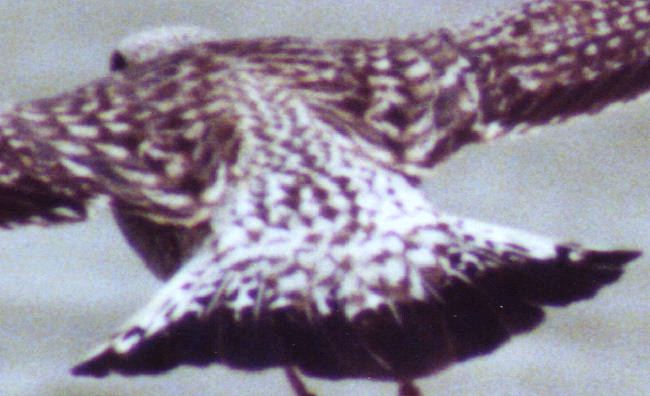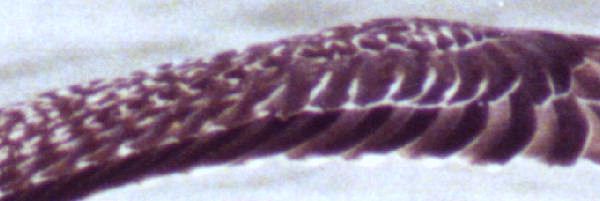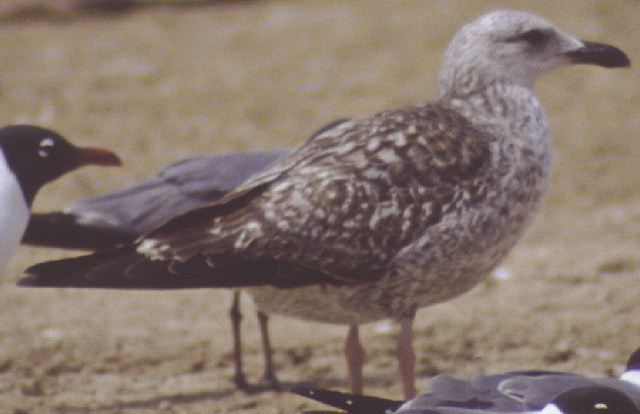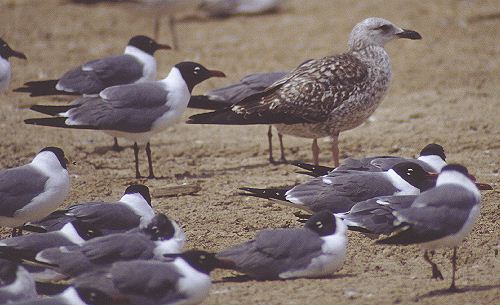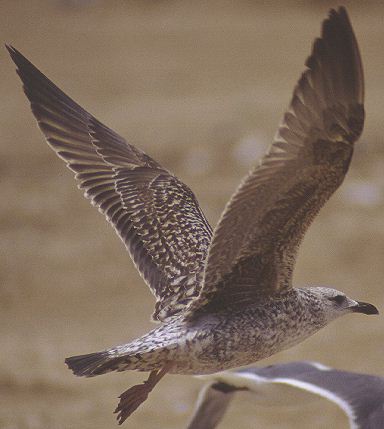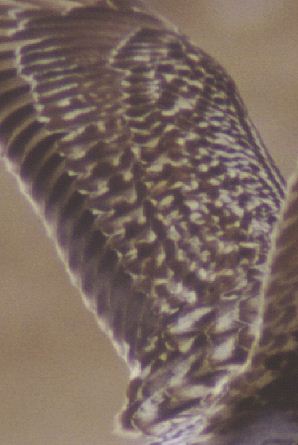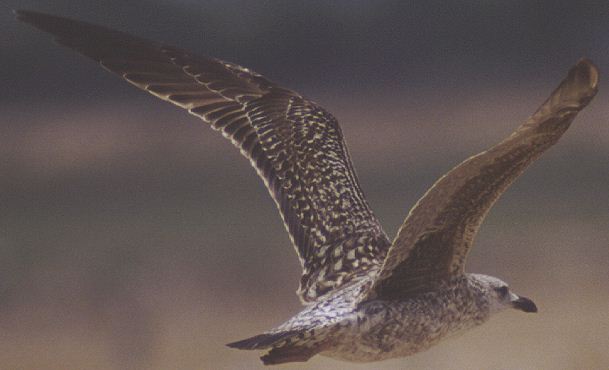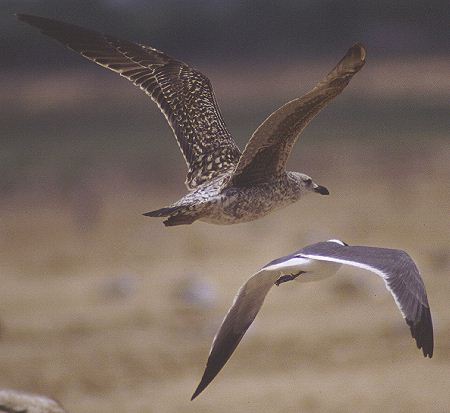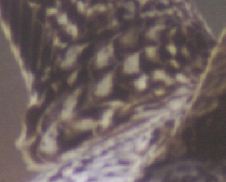
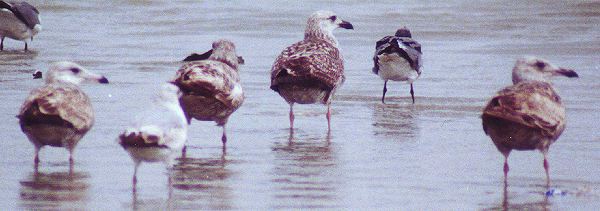
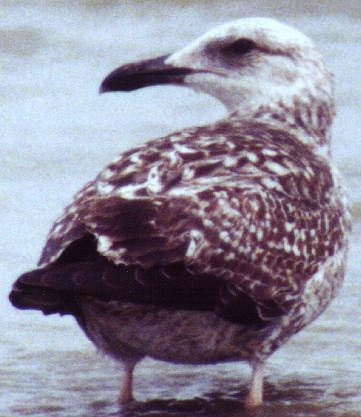
|
these look like fresh median/lesser coverts in the center of
the wing: 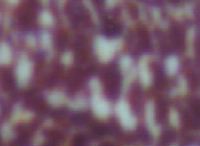 - and isn't that a fresh, mostly-pale innermost greater covert? Note the extensive wear in the remaining inner/central greater coverts, and on the tertial tips: |

| On the opposite wing again the innermost greater covert looks a bit fresher and more patterned, and there seems to be a patch of lesser/median coverts with thicker white fringes: |
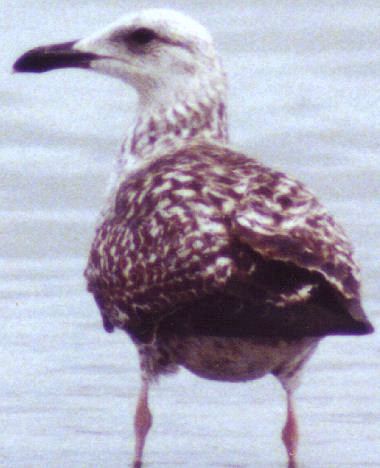
|
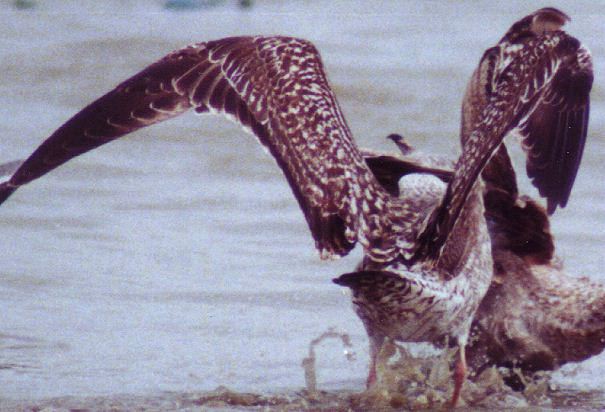
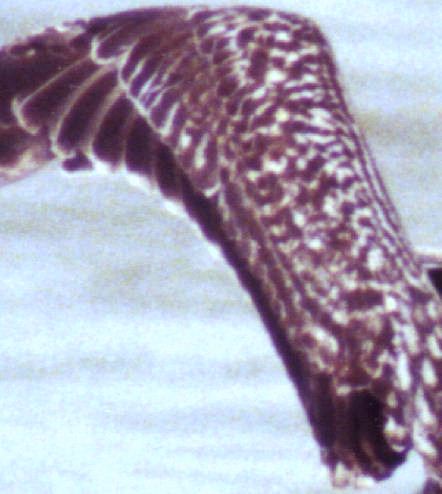
|
IMAGE "X": Most of the lesser coverts and many of the median coverts appear to be fresher feathers with broad white fringes. Look at the greater coverts: the central/inner ones are plain with extreme wear, while two inner feathers look fresher and with a large white subterminal band, and the outermost 8 or 9 look much fresher with an unworn thin white fringe and thicker white sides. Also the outermost two secondaries look more worn at the tips than the remaining secondaries. Finally, note that the longest two tertials have large white subterminal tips with a dark shaft streak and very thin terminal dark line - this despite the wear evident in earlier images: |

